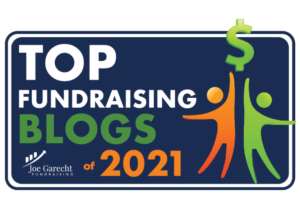Successful Fundraising Campaigns Are Led By Key Volunteer and/or Staff Leadership.
(The following is an excerpt from my soon to be released Tips Booklet on Effective Individual Donor Campaigns.)
I am a firm believer in the power of one person. An effort by one devoted human can make a world of difference in many situations. However, a strong, effective individual donor campaign is not a one-person show. To put it simply, the long-term work that must be done to cultivate and maintain relationships with individual donors requires a considerable amount of time. Yes, one person can devote themselves solely to that task—but if the staff, volunteers and board members don’t support them with additional efforts, the campaign will not succeed.
If you have the resources for development staff, the CEO/Executive Director and the board chair must be the biggest advocates for that staff. If you don’t have a development staff, I believe the CEO and board chair must take the lead in making sure there is a focus on individual fundraising beyond a simple annual appeal and the passive invitations to make a contribution in the newsletter.
In many of the organizations I come into contact with, nearly everyone shies away from the responsibility of taking care of the donors as thoroughly and carefully as they take care of the clients. Often this is because as volunteers or staff are brought on board, no one sets expectations for them to participate in development work. Any time someone is brought into the organization—whether as a board member, staff, or volunteer—I recommend there should be clear and explicit conversations about what’s expected of them when it comes to fund development. In some cases, that might mean direct fundraising; it certainly means making a financial contribution themselves; it might mean having volunteers or other staff help with acknowledging donors, and keeping long-time donors connected by personally inviting them to events. Whatever you decide about the tasks to have a successful individual donor effort-make sure everyone knows it.
Story Example: The board as team players —in theory
Beautify the Bronx (BTB) in New York has a mission of keeping neighborhood streets clean and safe, something they’ve been doing for 25 years. They’re an amazing environmental foundation with an endowment of $17.5 million that, like most investments, saw a reduction of 30-40% in the second half of 2008.
BTB has a 13-person board. People who love the organization and are thrilled to serve on the board and they’re proud to be able to keep their community clean and safe. Recently, a few energetic board members decided that if they could raise an additional $125,000 annually from individuals the group could greatly increase their annual grants and be able to make a bigger difference. Board members Alicia and Hugh, young professionals in their early 30’s, were willing to spearhead the effort of raising additional funds and were not at all daunted by the idea of inviting individual donor gifts from the community.
Sounds like a great idea, right?
And it was. However, no one had ever had a frank discussion when the long-time board members joined the board to outline what the expectations were in terms of them being involved in fundraising. There was no staff person dedicated to maintaining momentum of the tasks needed to engage individual donors. The very mention of the word “fundraising” was causing sweaty palms and queasiness for most of the board and the small staff. In fact, some of the board members had never made a financial contribution to BTB themselves. As far as they were concerned, the organization has an endowment generating interest, so why should they make financial contributions?
I was brought on to help this group and we quickly determined they’d need to get full board agreement before launching a fundraising campaign. Part of launching that campaign meant hiring a staff person, part-time, to spearhead the effort. Lots of discussion ensued, what I call the “fixing to do” kinds of discussion. Time passed and the economy got worse. So much time had passed since Alicia and Hugh proposed raising additional funds, their passion now waned and the endowment has declined to the point that they’re now in emergency mode.
The board is proud of the organizations accomplishments—but pride alone will not generate financial contributions. Beautify the Bronx finally decided to pare back their grants for the time being and do some work getting the board more engaged in individual donor fundraising before they launch their $125,000 annual campaign. They’ve had some big discussions, gotten more agreement and they are slowly moving forward to shift internal thinking and fear.
The good news is: The discussion about fundraising has shifted and most board members are now in agreement. They are clear that a staff person is needed to maintain momentum with an individual donor campaign. New board members are being brought on into an environment where there is a clear expectation that financial contributions are made by the board members, and donors are being kept in touch with at a much more personal level. All of these changes are setting the stage for a successful individual donor fundraising effort.
Moral to the story: A successful individual fundraising effort MUST have at least one staff and one board member who lead the charge & keep the momentum going. And it takes more than one staff person to hold others accountable. Without buy-in from the entire organization focus can be lost, passion wanes and the work it takes to keep donors connected and giving simply won’t get done.
Next week’s guest blog post will be from Blase Ciabaton, www.TheDirectMailMan.com!






